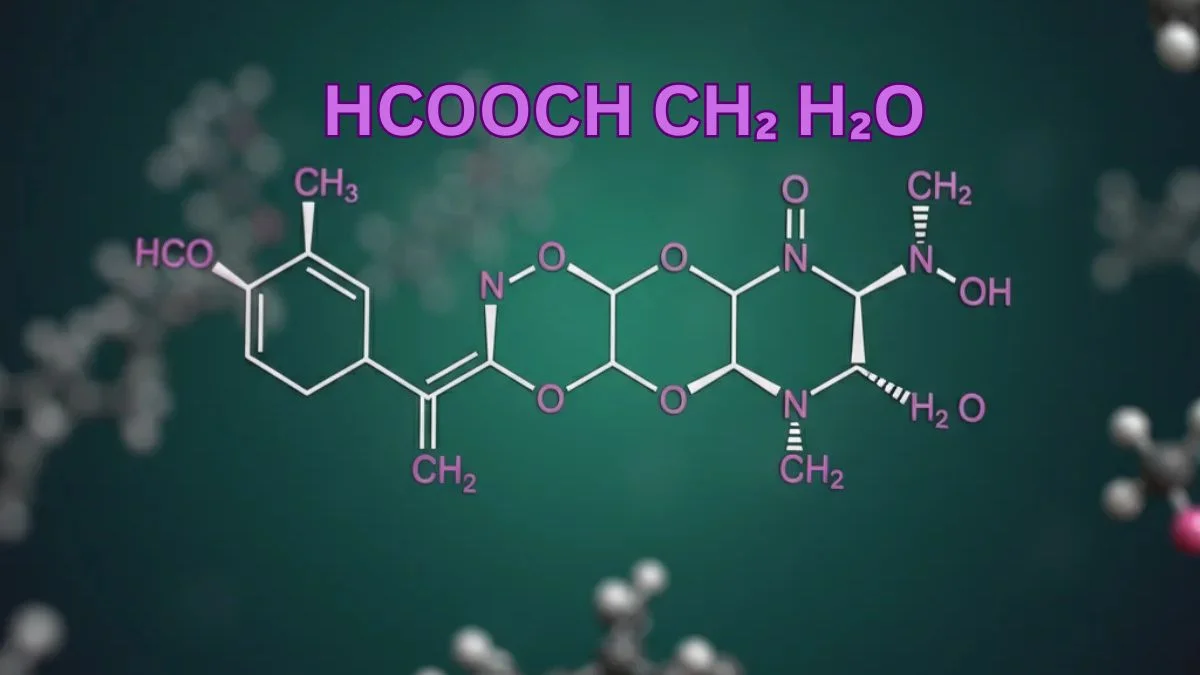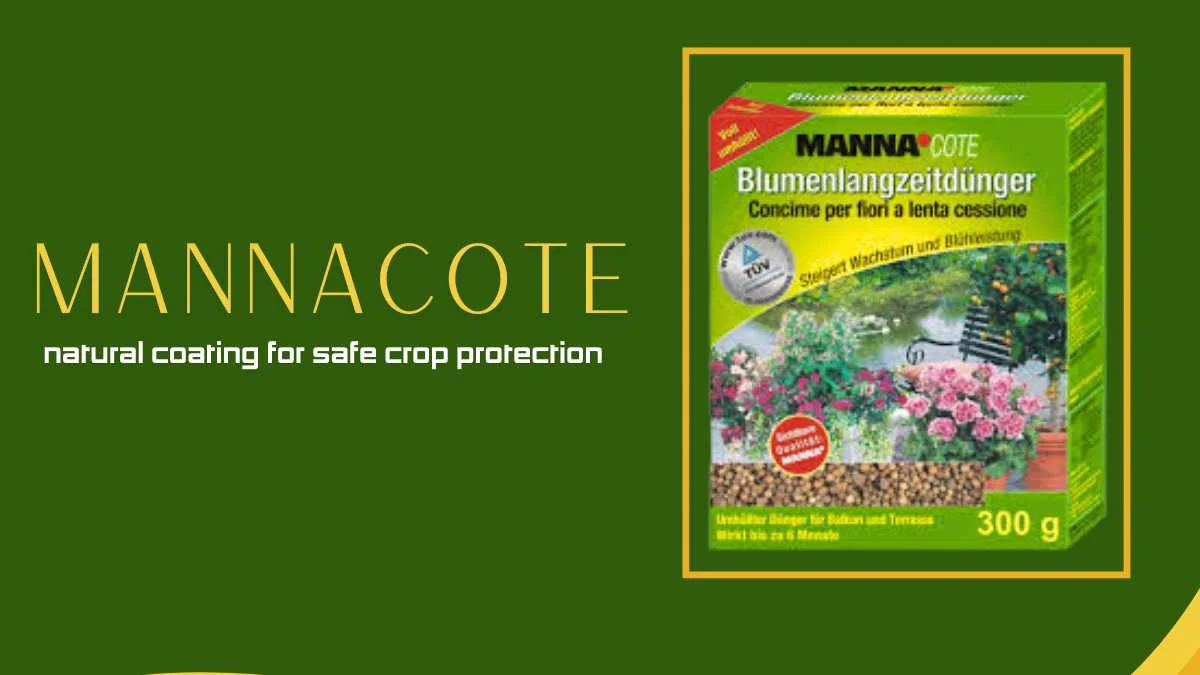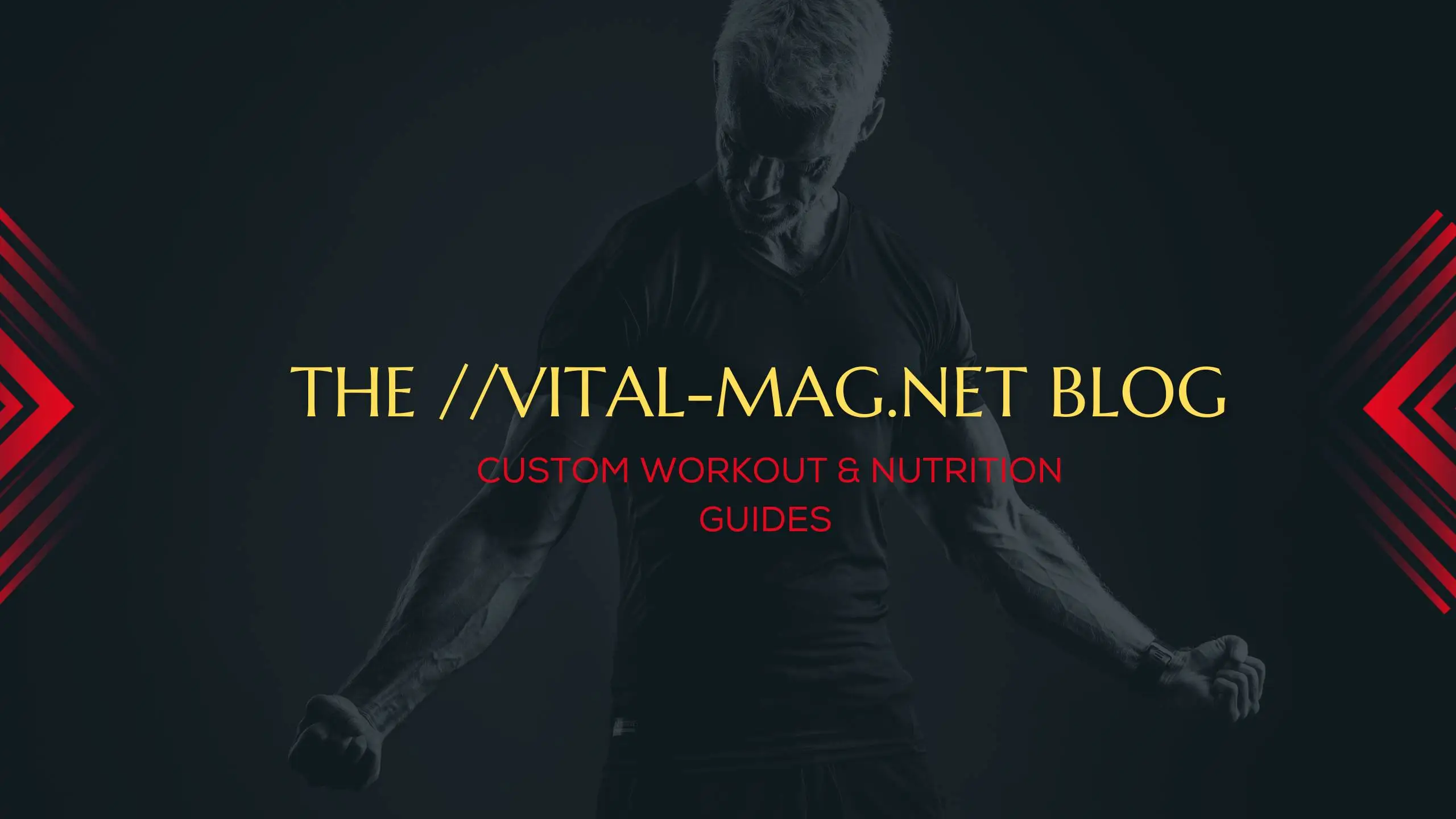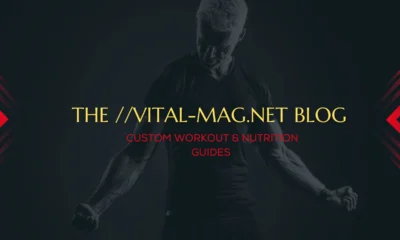GENERAL
HCOOCH CH₂ H₂O: Structure, Properties, and Industrial Applications

The complex compound HCOOCH CH₂ H₂O serves multiple industrial purposes in pharmaceutical applications along with organic synthesis and environmental science. This compound contains components from formic acid derivatives together with methylene groups and water molecules that produce distinctive properties symbolically. The compound exhibits chemical reactivity and stable structure as well as distinct polarity characteristics which allows diverse applications in multiple processes. The substance functions as a key component in both chemical reaction catalysis and industrial processes and medical investigative work. The study of structure synthesis and chemical properties reveals essential industrial and commercial knowledge about this compound. It has variety of uses in industries in agriculture and in medical field. Due to its great uses it is required in large amount to fulfill the needs.
Chemical Structure and Composition
HCOOCH CH₂ H₂O contains formate of esters and a methylene (-CH₂) group together with water molecules which enables different types of chemical bonding signals. Organic chemistry processes benefit from chemical transformations enabled by ester functional group reactivity sites. The addition of methylene group enables better solvent compatibility which expands industrial process suitability for this compound. The hydrogen bonding properties of the water molecule in the compound control both its solubility characteristics and its reaction behavior. The structure’s stability depends on the complex set of molecular interactions that function under diverse environmental influences. Architectural knowledge of these interactions enables scientists to successfully apply HCOOCH CH₂ H₂O when developing research methodologies and commercial manufacturing methods.
Physical and Chemical Properties of HCOOCH CH₂ H₂O
HCOOCH CH₂ H₂O exhibits unique physical and chemical properties that make it suitable for industrial and pharmaceutical applications. Some of its key properties include:
- Physical State & Appearance: It exists as liquid or semi-solid, depending on temperature and environmental conditions, with a characteristic odor.
- Solubility & Stability: It is soluble in various organic solvents and demonstrates moderate stability under controlled conditions, decomposing at high temperatures.
- Reactivity: Reacts with acids, bases, and oxidizing agents, playing a significant role in organic transformations and catalytic reactions.
- Polarity & Hydrogen Bonding: Exhibits moderate polarity, allowing it to participate in hydrogen bonding, affecting its solubility and interaction with other molecules.
- Thermal Behavior: It decomposes at elevated temperatures, releasing specific gases, making its thermal stability a crucial factor in industrial applications.
Synthesis and Production Methods
The synthesis of HCOOCH CH₂ H₂O involves a multi-step process that integrates formic acid derivatives, methylene groups, and controlled hydrolysis. One of the primary methods includes the esterification of formic acid with methanol or a similar alcohol, followed by the introduction of a methylene bridge. This reaction occurs in the presence of a catalyst to enhance yield and efficiency. Hydrolysis is then performed to stabilize the final product, ensuring its structural integrity. Industrial-scale production involves optimized reaction conditions to maximize output while maintaining product purity. Researchers continue to refine synthesis techniques to improve efficiency and minimize environmental impact, making its production more sustainable.
Environmental Impact and Sustainability of HCOOCH CH₂ H₂O
The weather impact of HCOOCH CH₂ H₂O functions through decomposition as well as the speed at which it breaks down. Under monitored conditions the substance shows natural decomposition which minimizes its persistent environmental impact. Large industrial waste releases need proper waste management systems because they cause small environmental damages to ecosystems. Application of this compound in pollution control and water treatment demonstrates its value for sustainability initiatives. Researchers dedicate their effort to developing green production techniques to reduce environmental damage and expand product applications. Similar to industrial usage regulations governmental agencies control the implementation of caustic potash operations to stop potential environmental risks while establishing eco-friendly manufacturing systems additionally safeguarding its waste disposal procedures.
Industrial and Role in Organic and Green Chemistry
HCOOCH CH₂ H₂O finds widespread applications across various industries due to its chemical versatility. In organic synthesis, it serves as an intermediate for producing more complex compounds. The pharmaceutical industry utilizes it for drug formulation, leveraging its reactive nature in chemical modifications. Environmental applications include its role in catalytic processes that aid pollution control and waste treatment. In industrial manufacturing, it is used as a solvent, coating agent, and stabilizer in chemical formulations. As sustainability becomes a priority in chemical research, HCOOCH CH₂ H₂O is gaining recognition in green chemistry applications. It contributes to eco-friendly processes by serving as an intermediate in biodegradable material production. Its reactivity allows for reduced waste generation in industrial synthesis, aligning with sustainable development goals
Pharmacological and Medical Significance of HCOOCH CH₂ H₂O
HCOOCH CH₂ H₂O holds significant value in pharmaceutical research due to its chemical interactions and potential medical applications. Some of its pharmacological properties include:
- Pharmaceutical Synthesis: It serves as an essential intermediate in drug development, enabling the production of active pharmaceutical ingredients (APIs).
- Antimicrobial Potential: Studies suggest that it exhibits antimicrobial properties, making it a potential candidate for medicinal formulations targeting bacterial infections.
- Drug Stability & Absorption: Its chemical stability enhances the shelf life of pharmaceutical products, ensuring long-term effectiveness in medical treatments.
- Metabolic Pathways: It interacts with biological systems in a controlled manner, facilitating research into its effects on metabolism and drug delivery.
- Therapeutic Research: Investigations are ongoing to determine its role in innovative therapies, including anti-inflammatory and nervous protective treatment.
Safety, Toxicology, and Handling Guidelines
Like many chemical compounds, HCOOCH CH₂ H₂O requires careful handling to prevent health hazards and environmental risks. Proper storage conditions, including temperature and humidity control, are crucial to maintaining its stability. Exposure to high concentrations may cause irritation to the skin, eyes, or respiratory system, requiring appropriate safety measures such as protective gloves and masks. Industrial facilities implement standard operating procedures to manage spills and accidental exposure. Regulatory agencies provide guidelines for safe transportation and disposal to prevent contamination. Understanding and adhering to these safety protocols ensures its responsible use in laboratories and manufacturing plants.
Advanced Research and Comparison of HCOOCH CH₂ H₂O
Ongoing research aims to expand the potential applications of HCOOCH CH₂ H₂O in new scientific fields. Scientists explore its role in advanced catalysis, where its chemical properties facilitate innovative reactions. Future studies may uncover its application in nanotechnology, where it could contribute to material synthesis at the molecular level. HCOOCH CH₂ H₂O shares similarities with other formic acid derivatives and esters but possesses distinct advantages. Compared to other esters, it demonstrates enhanced solubility and reactivity, making it suitable for specialized applications. Its stability in controlled conditions gives it an edge over less stable counterparts. When compared to traditional solvents, its chemical structure allows for targeted interactions, improving efficiency in organic synthesis.
Conclusion and Summary
HCOOCH CH₂ H₂O is a versatile chemical compound with broad applications in pharmaceuticals, organic synthesis, environmental science, and industrial manufacturing. Its unique structure contributes to its stability, reactivity, and adaptability in various chemical processes. The compound plays a crucial role in green chemistry, pharmaceutical research, and sustainable development. While safety considerations are necessary for handling and disposal, its benefits outweigh potential risks when used responsibly. Future advancements in chemical research will likely unlock even more applications, solidifying its importance in scientific and industrial innovation. As research continues, its role in emerging technologies and sustainable chemistry is expected to grow.
GENERAL
Aiyifan: Your Gateway to World-Class International Dramas

Aiyifan is a high-end international streaming platform that offers a curated library of premium dramas from Asia, Europe, and Latin America. Tailored for a global audience with refined tastes, it blends cinematic excellence with cultural diversity, creating an immersive viewing experience. From critically acclaimed K-dramas to gripping European thrillers, Aiyifan presents storytelling as an art form, accessible in stunning HD and 4K resolution.
Origin
Aiyifan was established with the vision of transforming the way international audiences consume international stories. Having started as a premium streaming service that specializes in commercial-free Asian dramas and movies, the company was founded by a group of visionary media experts enthusiastic about preserving and innovating culture. Combining the latest in digital infrastructure and professional content curation, Aiyifan soon established itself as a reliable source of East Asian entertainment. This advanced strategy and inclusiveness will lead it to its transformation into a renowned international streaming brand.
Aiyifan: Global Stories, Local Hearts
Aiyifan initiated its operations by providing a high-quality collection of Asian dramas, especially those of South Korea, Japan, China, and Taiwan. These plays soon became popular all over the world due to their emotional resonance, good plot, and depth of culture, and they soon reached an international fan following.
In an attempt to curb the increasing demand for international content, Aiyifan intensified international content consumption with dramas in Europe and Latin America. This was a part of its strategic expansion and Aiyifan became a global streaming platform.
Features
1. Diverse International Content Library
Aiyifan has a wide diverse collection of international dramas with works in Asia, Europe, and Latin America. Being represented through such genres as romance, thriller, historical, and family drama, the platform satisfies an audience with various settings and interests, cultural understanding, and narration across all streaming platforms in a single service with access to numerous genres available through an app.
2. High-Quality Streaming
Aiyifan provides high-quality viewing experience, as it supports HD and 4K streams ensuring high-quality images and excellent sound effects. It uses adaptive streaming technology to optimize the work of the device, depending on the internet speed. In combination with the offline viewing option, users can also watch their favorite foreign dramas without any interruption at a high level of quality from any place and at any time.
3. Offline Viewing
Aiyifan’s feature of viewing offline enables a user to download his or her favorite drama and watch the movie without being connected to the internet. It is ideal to travel or use during commute and in places with low internet connection, providing audiences around the world with flexibility and freedom.
4. High-Quality Multilingual Subtitles
Aiyifan provides high-quality multilingual subtitles, expertly translated to preserve cultural nuances and dialogue accuracy. This ensures an immersive and authentic viewing experience for international audiences, regardless of language barriers.
5. User-Friendly Interface
Aiyifan offers intuitive navigation, personalized recommendations, and multilingual support, ensuring a smooth and accessible experience for all users.
Technology That Enhances Experience
Aiyifan is a TV that combines high technology and classy design to give viewers a smooth and immersing television experience. It has a simple and intuitive interface, which makes it easy to navigate the interface through various genres, languages, and recommendations, which are based on preference. Its platform is fully compatible with the use of smartphones, tablets, desktops, and smart TVs, making it accessible on all scales.
International Partnerships and Content Expansion
Aiyifan has also made solid alliances with the main content creators and top studios in the regions of Asia, Europe, and Latin America. Thanks to these deals, the platform gains exclusive rights, advance releases, and jointly produced original series combining storytelling approaches of more cultures.
This also keeps the library’s content dynamic and diverse as it constantly increases its global reach. Strategic partnerships enable the platform to remain at the edge of the trend and provide its patrons with new culturally diverse dramas.
Why Aiyifan Leads in International Drama Streaming
| Feature | Aiyifan | Netflix | Viki (Rakuten) | Amazon Prime Video |
| Focus on International Dramas | ✅ Strong focus (Asia, Europe, Latin America) | ✅ Broad but not specialized | ✅ Specializes in Asian dramas | ✅ Available, but limited selection |
| Subtitle Quality | ✅ High-quality, culturally accurate | ✅ Standard, sometimes delayed | ✅ High-quality community subs | ✅ Basic, varies by region |
| Languages Supported | 🌐 Multiple subtitle languages | 🌐 Wide subtitle and dubbing options | 🌐 Multilingual subtitles | 🌐 Subtitles in major languages |
| HD & 4K Streaming | ✅ Yes, supports both | ✅ Yes | ✅ HD (4K limited) | ✅ Yes |
| Offline Viewing | ✅ Available | ✅ Available | ✅ Available | ✅ Available |
Future Outlook
Aiyifan seeks to establish a wider presence in the worldwide market by incorporating such innovative technologies as AI suggestions and immersive formats. Still capitalizing on the factors of cultural diversity, strategic partnerships, and improved user experience, the center will merge as a major factor in the determination of the future of international streamed dramas.
Conclusion
Aiyifan is a good instrument of global storytelling and is among the elements that cross culture with its dramatic international tales. It is a fully-fledged service, whose interface is simple in its use and quality is never compromised, changing the process of streaming. As it grows, Aiyifan continues to give the world value by making sure that various content of high quality is so readily available to all of us in all places and turns out to be an enjoyable experience
GENERAL
Mannacote: Natural Coating for Safe Crop Protection

Food insecurity and plastic pollution are issues the entire world is struggling with, and the urgency of developing safe, sustainable, and scalable solutions in the field of agriculture has never been more apparent. Say hello to Mannacote, a revolutionary, edible plant-based coating. Mannacote finds applications in seed, grain, and fresh produce protection, extending the shelf life and food safety of products, eliminating toxic plastics and inorganic chemicals, and enhancing food sustainability.
What is Mannacote?
Mannacote is a protective edible bio-coating, produced out of plants that can be used to protect any agricultural commodity. It is produced using proprietary blends of starches, waxes, plant proteins, and natural antimicrobial ingredients, and can be sprayed on seeds, grains, fruits, and vegetables to guard against spoilage of the food, pest resistance, and increase shelf life.
The difference is that it serves both as a crop protection tool and a food safety packaging solution. As opposed to petroleum-based coating or chemical treatment, it is consumption-safe, hypoallergenic, and thoroughly biodegradable. This edible layer provides value during harvest, transit, or on retail shelves, and it does not add toxins or plastics to the food chain.
The Science Behind Mannacote
Mannacote is a biopolymer, which makes it efficient. The natural starches and proteins form a soft yet porous film on the outside of the seeds or the produce. This film does not allow the loss of moisture and contamination; however, it does allow natural respiration, without which the freshness of fruits and vegetables is essential.
Furthermore, this consumable layer possesses natural antimicrobials that restrict bacterial and fungal growth, i.e., either plant-derived enzymes or essential oils. This decreases spoilage, rot and decreases the necessity to employ refrigeration or chemical preservatives. Mannacote complies with international food safety standards and can be used in organic farming due to its non-toxic nature and having no allergens.
Key Benefits
- Edible & Allergen-Free: Safe to meet food and eat it
- Longer Shelf Life: Maintains freshness by inhibiting respiration and microbial growth
- Minimizes Post-Harvest Losses: Minimizes waste along the supply chains
- Biodegradable: Degrades, absorbing no microplastic waste
- Plastic-Free: Alternative to the polyethylene and wax coating, which are more sustainable
- Meets Organic Standards: GMO-free, synthetic-additive, and petrochemical-free
- Increases Export Readiness: Saves produce on long-distance transportation
Practical Uses
Mannacote can be seamlessly integrated into various stages of the agricultural and food handling process. Here are three of the most common and impactful use cases:
1. Seed Coating for Early Protection
This plant-based solution may be used on planting seeds as a thin protective layer that prevents fungal diseases, infestation by pests, and loss of moisture. This increases the germination rate and avoids synthetic seed treatments.
2. Fresh Produce Preservation
Fruits and vegetables sprayed with Mannacote keep longer and are less likely to mold because of microbial growth. Such an application is particularly useful with produce sold without cold chain facilities, in which shelf life from farm to market can be increased.
3. Plastic-Free Food Packaging Coating
Paper-based packages also use mannacote, where traditional plastic wrapping of food is used. It is also compostable, food-safe, and caters to the increasing consumer interest in environmentally friendly services in the retail industry.
Environmental Sustainability
Mannacote is not just a convenient way to protect food- it is also a significant step in a responsible attitude toward the environment. Unlike conventional plastic coatings, this plant-based solution is entirely biodegradable, degrading in the soil or compost when used without leaving any microplastics or toxins.
It is manufactured through renewable inputs of plants instead of fossil fuels, lowering the carbon footprint of food film by far. Mannacote also results in a reduction in the environmental cost of food waste, another significant driver of greenhouse gas production in the world.
What Makes Mannacote Different from Other Coatings?
| Feature | Mannacote | Traditional Coatings |
| Base Material | Plant-based (edible) | Petroleum-derived or synthetic |
| Biodegradability | 100% biodegradable & compostable | Non-biodegradable |
| Food Safety | Edible, allergen-free, non-toxic | Often inedible or chemical-laced |
| Environmental Impact | Zero plastic waste | Major source of plastic pollution |
| Use In Organic Systems | Fully compatible | Usually prohibited |
| Breathable Barrier | Yes | Often airtight or wax-heavy |
Why Farmers Are Using Mannacote
Farmers are increasingly adopting Mannacote as a cost-effective, sustainable alternative to synthetic coating and chemical treatments. Here’s why:
- Longer shelf life means better prices at local markets and fewer losses
- Improved seed protection boosts germination and early plant health
- Organic certification-friendly, appealing to health-conscious consumers
- Eco-conscious branding gives farmers a competitive edge
- Simple to apply—can be used with existing dipping, spraying, or coating systems
From small-scale growers to global exporters, this plant-based solution is proving its value as a tool for modern, sustainable farming.
The Future
The potential for Mannacote is enormous. As governments crack down on single-use plastics and global consumers demand cleaner food systems, solutions like Mannacote are no longer optional—they’re essential.
Looking ahead, Mannacote may be adapted for:
- Smart packaging integration (e.g., freshness sensors)
- Broader crop compatibility across diverse climates
- Government-supported food security programs
- Partnerships with global packaging and agri-tech companies
Mannacote represents a future where natural solutions meet scalable impact.
Conclusion
Mannacote is not a product alone; it is a movement. It assists in shielding food, waste, and minimizing detrimental plastics in the food chain by integrating nature-based innovation with real agricultural requirements.
As a farmer, retailer, or policymaker, Mannacote presents an interesting alternative to continue to be sustainable but without the performance compromise. We are going to dose our food with something superior: our crops and our future.
GENERAL
The //vital-mag.net blog: Custom Workout & Nutrition Guides

The //vital-mag.net blog is dedicated to transforming health and fitness into a sustainable lifestyle for its readers. The blog’s mission is to provide a comprehensive wellness hub that integrates expert advice, science-backed practices, and personalized support to help individuals achieve their fitness goals. With a vision to create a healthier, more informed community, The //vital-mag.net blog offers a wealth of resources tailored to the needs of diverse audiences. In a world inundated with health and fitness information, The //vital-mag.net blog offers a centralized resource where users can find reliable and personalized advice.
Core Themes of The //vital-mag.net blog
- Personalized Workout Plans
- Expert Nutrition Advice
- Certified Trainers and Professionals
- Science-Backed Approach to Wellness
Personalized Workout Plans
Personalized workout plans are specific exercise schedules aimed at an individual’s requirements, objectives, and fitness capabilities. These plans increase productivity by first identifying one’s strengths and targeting areas of inefficiency, thereby increasing general fitness and decreasing the likelihood of developing problems. The //vital-mag.net blog uses a comprehensive evaluation process to design exercise programs based on various requirements of users, such as their fitness condition, their goals, and their choices. Sophisticated software and professional instructors work together to offer individually tailored programs that change depending on the client’s performance. Working out is a comprehensive fitness program with the use of cardio, strength, flexibility, endurance activities, ample rest, and recuperation periods.

Expert Nutrition Advice
Nutrition is a very important aspect of fitness and health, especially when aiming for a certain fitness achievement. A balanced diet enables the provision of energy for workouts, muscle healing, and general health; hence, it is a major ingredient of any fitness strategy. The //vital-mag.net blog offers professional nutrition tips that include the principles of proper diet planning, correct portioning, and an individual’s nutritional requirements within the context of her or his choice of exercise regimen. It is intended to be a part of the programs that are created for individuals and their exercise routines, as well as for the improvement of health. Certified nutritionists, on their part, avail themselves by sharing nutritional consulting and preparing specific diet plans.
It guarantees that the given and advised nutrition is both evidence-based and feasible to implement. Some of the nutrition plans that are detailed in the blog include the weight loss diet, diet plans for muscle building, and many others. Sample nutrition plans for meals with set macronutrients are also provided, as well as healthy recipes. Health experts recommend certain types of foods that should be consumed in specific proportions to achieve a particular health status, weight loss, increased energy, and minimal disease risks. The focus of the advice posted in the blog is to encourage people to have sustainable health benefits beyond basic physical fitness.
Certified Trainers and Professionals
Certified trainers bring a wealth of knowledge and expertise to fitness programs, ensuring that exercises are performed safely and effectively. Their qualifications help in designing personalized plans that maximize results while minimizing the risk of injury. The //vital-mag.net blog features detailed profiles of its certified trainers and professionals, including their qualifications, experience, and areas of expertise. This transparency helps users make informed choices about their fitness support.
The certified trainers and professionals contribute by developing and adjusting personalized workout plans, providing one-on-one coaching, and offering insights based on their specialized knowledge. The certification process involves rigorous training and examinations to ensure that trainers and nutritionists are well-versed in the latest fitness and health practices. This process guarantees the quality and reliability of the advice provided.

Science-Backed Approach to Wellness
Evidence-based practices in fitness involve using research and scientific data to inform exercise and wellness strategies. This approach ensures that recommendations are grounded in proven methods rather than anecdotal evidence. The //vital-mag.net blog incorporates findings from recent studies and research to validate its methods, including data on the effectiveness of various exercises, dietary strategies, and wellness practices. A science-backed approach enhances the credibility and effectiveness of fitness programs, providing users with confidence that they are following methods that have been proven to work. The blog regularly reviews the latest research and incorporates new findings into its content to ensure users benefit from the most up-to-date wellness practices.
Long-Term Sustainable Lifestyle Changes
Sustainable lifestyles are modifications of behavior that enhance the well-being of an individual and fitness standards in the long run. These changes are fundamental for sustaining progress and guaranteeing positive impacts in the long run. The //vital-mag.net blog offers options for weight loss and maintaining body fitness by setting appropriate goals and making use of incremental training. The blog helps the readers sustain change by creating a treatment plan, using motivational materials, and reading on a long-term basis.
Empowering Individuals on Their Fitness Journey
The //vital-mag.net blog employs different strategies and methods to encourage readers and enable them, such as the use of goal-setting tactics, motivational words, and tools that show the progress made. They make it easy for the users to stay immersed and compliant with their fitness-related goals. Personalization makes fitness coaching and fitness advice to be personal which makes clients or listeners to be motivated in the fitness plans that they intend to follow. Some of these include the use of fitness journals, applications, and performance indicators, which assist users in monitoring their performance and making necessary alterations.

The effect of exercise and fitness cannot be achieved overnight. Losing weight, gaining muscle, and shaping the body are all processes that require long-term persistence, and most people find it difficult to persist. How can users get started and stick to exercise? A good way is for fitness websites and gyms to set up rankings for users, and rank them by winning or losing in competitions or the number and duration of exercise check-ins. The top three users can receive unique Custom Medals. Rankings are a motivation and driving force for fitness enthusiasts, to persist in exercise and achieve satisfactory results.

Tailored Resources for Different Fitness Levels
The //vital-mag.net blog offers tailored resources for users at different fitness levels, from beginners to advanced athletes. Each program is designed to address its target audience’s unique needs and challenges. The blog addresses diverse fitness needs by providing specialized content and resources that cater to various levels of experience, goals, and physical conditions. Examples include beginner-friendly workout plans, intermediate strength-building routines, and advanced performance-enhancing strategies.
Integration of Fitness and Wellness Technologies
The //vital-mag.net blog uses various technologies related to fitness and wellness to add to its portfolio. This also got applications for tracking their exercises, wearables to monitor their health indicators, and online platforms for creating individualized plans. It improves the administration of personalized plans by gathering updated information, facilitating changes in the workout and nutrition schedule, and integrating with user devices. Examples include escalator or elevator apps, food intake apps, and virtual coaching apps. Advantages include precise measurement of the progress, flexibility when it comes to schedules for workout sessions, and easy access to professional advice on the matter.
-

 BIOGRAPHY1 month ago
BIOGRAPHY1 month agoBehind the Scenes with Sandra Orlow: An Exclusive Interview
-

 HOME7 months ago
HOME7 months agoDiscovering Insights: A Deep Dive into the //vital-mag.net blog
-

 HOME10 months ago
HOME10 months agoSifangds in Action: Real-Life Applications and Success Stories
-

 BIOGRAPHY8 months ago
BIOGRAPHY8 months agoThe Woman Behind the Comedian: Meet Andrew Santino Wife




























